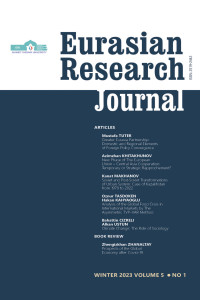Abstract
It is the expenditure on consumption that constitutes the basic share of the expenditures of the households that supply labor as a factor of production in an economy. These expenditures have an indirect effect on the input costs of the companies that demand labor as a production factor. The change in food prices determines both the relative price structure of the economy and the inflationary trend in the economy for the future, depending on the changes in labor and goods markets. For this reason, households that make the consumption decisions of companies as a producer decision unit in the economy are highly sensitive to changes in food commodity prices. A continuous and permanent change in food commodity prices has a direct impact on consumption expenditures and investment decisions. This effect causes supply shocks that may arise as a result of food and commodity prices to turn into demand shocks at the same time. From this point of view, this study investigates the distribution of volatility in global commodity prices, food commodity prices, Baltic dry indices, and crude oil prices, which are the indicators of price trends of basic inputs in international markets. Thus, the mechanism of spillover of a possible supply shock is revealed at the international level under the restrictions of the asymmetric TVP-VAR approach.
Details
| Primary Language | English |
|---|---|
| Journal Section | Research Articles |
| Authors | |
| Publication Date | February 28, 2023 |
| Published in Issue | Year 2023 Volume: 5 Issue: 1 |


